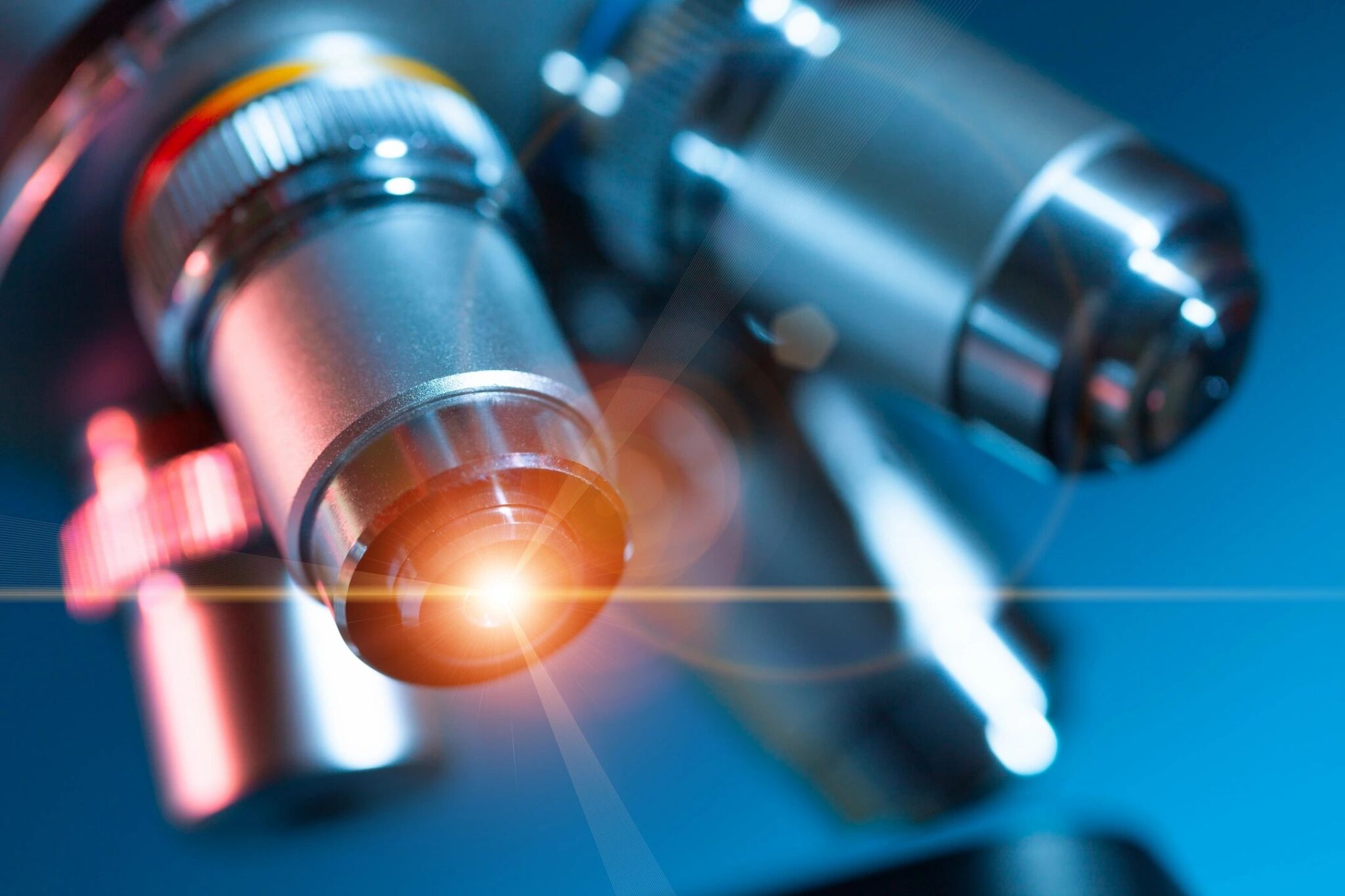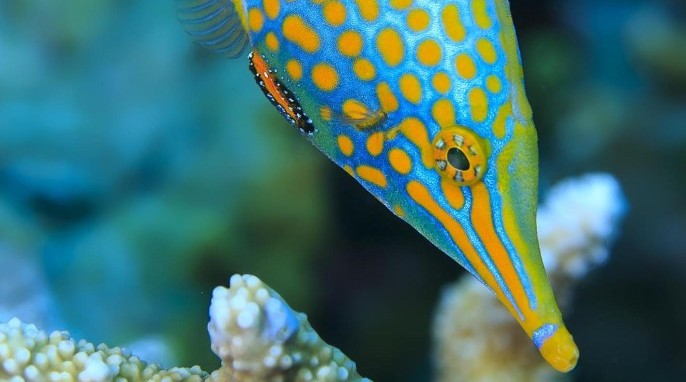Blue and red light are energy sources for microorganisms such as bacteria, and we can harness this energy to control bacteria growth.
By Gabrielle Leal
Sunlight is both a source of energy for microorganisms and a source of electrical energy. However, there is still more to learn about light’s various properties and applications. Light is just electromagnetic radiation, or a sort of energy wave, moving at a frequency visible to the human eye. The human eye can only see light frequencies with wavelengths of 400 to 700 nanometers. Different wavelengths determine the perceived color. Blue light, for example, is sensed when photons—the particles carrying this light energy—move with wavelengths between 400 and 450 nanometers.
The power of colors: blue and red light for microbial growth
Blue and red light are frequently used instead of sunshine or white light to help grow microalgae (microscopic algae) and cyanobacteria (a type of microorganism that gets its energy through photosynthesis). This is because the important pigments for photosynthesis, chlorophylls a, b, and c, as well as carotenoids, can easily absorb these colors. A researcher may select either blue or red light depending on the particular microorganism and the product being produced. Red light is commonly used to stimulate growth, whereas researchers have found that blue light can help produce proteins, lipids, chlorophylls, and other photosynthetic pigments, which have practical applications in industries such as pharmaceuticals, food production, and cosmetology. Combining blue and red light can also promote microalgae growth and the production of commercially useful chemicals. As a result, there is a growing trend in the horticultural industry toward vertical farming in “Pinkhouses” that use blue and red lights to grow plants or microorganisms.
Sunlight Powers Recycling of Carbon Dioxide and Plastic
The benefits of blue and red LEDs in antimicrobial applications
While some microorganisms can be beneficial, others pose a threat to public health. These disease-causing microorganisms can be minimized with methods such as heat treatment, UV light exposure, high pressure, and chemical use. Light-emitting diodes (LEDs) are a promising alternative for managing pollutants in several industries, particularly the food industry. LEDs are energy efficient and not harmful to the environment, making them an appealing choice for companies looking to decrease their carbon footprint. LEDs have also been demonstrated in experiments to be effective in minimizing microbiological contamination by suppressing the growth of bacteria, viruses, and fungi. As a result, the use of LEDs is an innovative and practical method for lowering the danger of contamination in a variety of contexts. More research will need to be done to explore its potential for improving public health and safety.
Pathogenic (disease-causing) bacteria becoming resistant to antibiotics is a big health concern. Researchers Ítalo Galo, Rodrigo Prado, and Wagner Dos Santos investigated the use of visible light, specifically blue and red light, as a new way to treat bacterial infections instead of relying solely on antibiotics. In this study, they tested the effect of blue and red light on two common bacteria, Staphylococcus aureus and Pseudomonas aeruginosa, often found in healthcare-associated infections. They found that only blue light, when applied for 6 hours, was able to temporarily slow down the growth of these bacteria. However, the bacteria could start growing again after 48 hours. Red light didn’t show the same effect. This research suggests that blue light could be a potential alternative for treating antibiotic-resistant bacterial infections, but more studies are needed to make it more effective.
Ultimately, light has many features and applications. It is a source of energy for bacteria. It can be employed for antimicrobial purposes. Blue and red lights are often used to grow microbes in a laboratory, with the color choice depending on the microorganism and the desired outcome. Meanwhile, LEDs are a viable alternative for regulating contaminants. This is useful for improving safety in the food industry and other contexts. Several studies have also shown that light treatment has the potential to treat illnesses caused by antibiotic-resistant bacteria. The possibilities for light’s usage in different industries, including healthcare, will continue to expand as more research is undertaken.
References
Galo, I. D. C., Prado, R. P., & Dos Santos, W. G. (2021). Blue and red light photoemitters as approach to inhibit Staphylococcus aureus and Pseudomonas aeruginosa growth. Brazilian Journal of Biology, 82, e231742. doi: 10.1590/1519-6984.231742.
Gonçalves, M. L. L., et al. (2020). Antimicrobial photodynamic therapy with Bixa orellana extract and blue LED in the reduction of halitosis—A randomized, controlled clinical trial. Photodiagnosis and Photodynamic Therapy, 30, 101751. doi: 10.1016/j.pdpdt.2020.101751.
Masson-Meyers, D. S., Bumah, V. V., Biener, G., Raicu, V., & Enwemeka, C. S. (2015). The relative antimicrobial effect of blue 405 nm LED and blue 405 nm laser on methicillin-resistant Staphylococcus aureus in vitro. Lasers in Medical Science, 30(9), 2265–2271. doi: 10.1007/s10103-015-1799-1.
Peçanha, M. P., Ferreira, J. J. C., & Diniz, A. L. (2018). Investigação da ação antimicrobiana da luz azul contra diversos agentes de infecção hospitalar. [Investigation of the antimicrobial action of blue light against different nosocomial infection agents.] Revista da Faculdade de Ciências Médicas de Sorocaba [Magazine of the Faculty of Medical Sciences of Sorocaba], 20(Suppl.).
About the Author
Biotechnologist Gabrielle Leal has over ten years of lab experience and a master’s degree in the field. Microbiology, industrial bioprocesses, and intellectual property are among her areas of expertise. She is fascinated by the research and advancement of biotechnological approaches for various applications.




